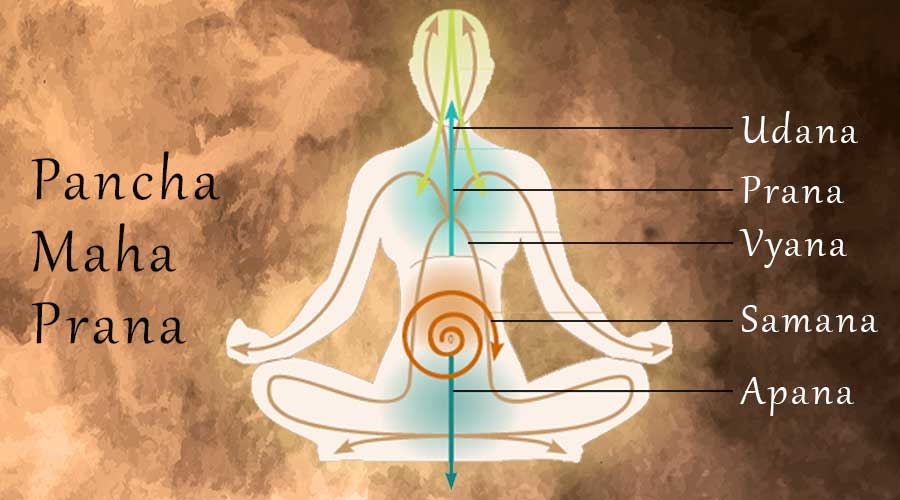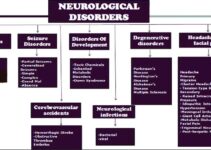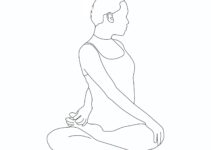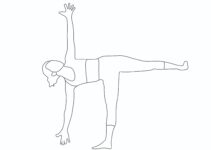What is the Prana Concept?
Prana is the vital energy of the universe which pervades the whole body. This energy gives creation a shape and form. The entire universe is filled with Prana, and all product simply manifests this force. There is not a single object in the universe that is devoid of Prana. It is said that without Prana, there is no animation, time, seasons, day or night, life and creation. All created forms, whether human, animal, plant or mineral, depend on Prana. The universal Prana is the parā-Prakṛti (pure nature). The inherent energy or force derived from the Infinite Spirit permeates and sustains the universe.

How do you understand prana?
- At the individual level, Prana is vital to life; without it, there will be no life. Having been infused with Prana, one feels increased energy and vitality. All functions of the body are carried by this Prana only.
- Prana has a relationship with consciousness. Prana and consciousness both originated from the soul, the conscious unit. At the physical level, both depend on and affect each other, but at the empirical level, both are different. In an empirical or transcendental sense, Prana has no consciousness, but at the same time, it is the basis of consciousness.
- Prana can also be viewed as a biological force lodged between the soul and matter to express the former and move the latter. The soul can exist without Prana, but the Prana in the body cannot live without the soul.
Relation between Prana and Chakras
Prana in the body first evolves as mind (citta) in the brain, ākāśa (ether) in the region of the throat, Vāyu (air) in the area of the heart, Agni (fire) in the region of the navel, āpa (water) in the part of testes and pṛthivī (earth) in the area of the perineum. There are prāṇic energy centres at these places known as chakras, which means ‘wheel’ or ‘vortex’. These chakras are the centres of spiritual power. These are seven in number namely sahasrāra, ājñā, viśuddhi, anāhata, maṇipūr, swādiṣṭhāna and mūlādhāra. In the context of Prana, mūlādhāra chakra is essential. This is considered as the starting point. Prana works from mūlādhāra, preserves the energy and also distributes the same throughout the body for various activities of body and mind. In its dynamic aspect, it resides at the mūlādhāra chakra and regulates all body functions.
What are the various definitions of Prana?
- Prana has been defined in various ways in ancient Vedic literature. According to Ṛgvedabhāṣya, Prana is the controller of āyu (life).
- According to Atharvaveda, it is Prana only by which a living force is alive. Prana is universal, an inspiration of all actions and a witness of everything. That’s why Prana is worshipped. Prana is the Sun and Moon and protector of all lives and existence.
- Prana is said to support all existence because it is Prana in which everything is established.
- Bṛhadāraṇyakopaniṣad defines Prana as a force, nectar and age.
- Taittirīyopaniṣad states that all living beings are produced and nourished by Prana and enter into Prana after death. Therefore, it is said that life attains existence due to Prana.
- Haṭhapradīpikā also considers Prana as the source of life. As long as the Vayu remains in the body, it is called life. Death occurs when it leaves the body. Therefore, Vayu should be retained.
- In Yogic tradition, Prana and citta have been considered as intricately related to each other. Fluctuation of one means fluctuation of the other. The other becomes steady when any of them (Citta and Prana) is balanced. The stillness of Prana has been considered essential for the peace of citta. Yogic texts emphasise that citta (mind stuff) is still as long as Prana is. Hence, Prana is to be stilled.
- Haṭhapradīpikā states if the Prana is controlled, the Citta will also be held, and if the Citta is controlled, the Prana will be automatically controlled. All types of vibrations and fluctuations come to a standstill when Prana and Citta are steady and silent. The wise yogis studied this connection between breath and consciousness and advocated the practice of prāṇāyāma to stabilise energy and consciousness.
- Yogavāsiṣṭha views prāṇāyāma as the means of gaining steadiness. It explains that through continued practice of prāṇāyāma, the vibrations of breath are silenced, which causes the mind to become completely silent. That is the state of nirvāṇa. In the following verse, it states:
- Annapūrṇopaniṣad also mentions that Yogis control the breath to have peace of mind (cittaśāntī). One can easily control the mind by controlling the Prana.
Origin of Prana
Prana has been worshipped in the Vedic literature. In various upaniṣads, we find several references that communicate that Prana originated from Brahma / Ātman. As tiny sparkles come out of the fire, all Prana comes into existence from the Ātman. Prana originated from the ātman.
Types of Prana
We find details of the prāṇic body in Vedic, Yogic and Tantric literature. Taittiriya Upanishad states that there are five sheaths around the spiritual self of a human being. The outermost first sheath is known as Annamayakośa. This is composed of the essence of the food that we eat. The second sheath, Pranamayakośa, consists of the Prana (the vital force). The third sheath is the Manomayakośa. This sheath is interior to the Pranamayakośa and consists of the mental cosmos constituted by Prana. The fourth sheath, Vijñānamayakośa, consists of discriminative power or finite consciousness. The fifth sheath, called Ānandmayakośa, is the state of infinite consciousness and complete bliss. Prana is the basic fabric of the entire creation and manifests in Pranamayakośa. In the physical body (Annamayakośa), Prana is supposed to have various forms. These forms are named as Prana, Apāna, Samāna, Udāna and Vyāna. These five significant forms of Prana are called PañchaPrana. The PañchaPrana performs various functions. Each form of the five Prana performs specific functions. As electricity is the unseen basis for light and heat, Pranas are the basis of all physiological and psychological processes in the gross body. The location of various Pranas is – Prana in the heart, Apāna in the lower abdomen, Samāna in the region between the rib-cage and navel, Udāna in the area of throat and above, and Vyāna in the whole body. The different forms of prana are:
- Prana: Prana is responsible for the most critical vital breathing activity. It brings the energy source (oxygen) to the body. With this, it nourishes the body, sustains it, and maintains continuity of life. In a significant way, this activity takes place in the thoracic region; therefore, the thoracic region is supposed to be the seat of Prana.
- Apāna: While utilising the energy, waste is generated. To maintain the body’s health, it is necessary to remove the debris from the body. Apāna performs this function by removing the debris from the body through urine, faeces, and outgoing air (carbon dioxide). Its activity region is the lower abdomen region lying below the navel.
- Samāna: The energy taken in through Prana needs to be assimilated. This is done by samāna. The function of samāna is assimilation. From a yogic point of view, samāna is the most important Prana. It is related to Sushumna nāḍī. Samāna can be developed by bringing Prana and apāna within the region of samāna. It is supposed to function in the region between the navel and rib cage, i.e., the stomach area between the thoracic region and the lower abdomen (between Prana and apāna).
- Udāna: Udāna is responsible for more subtle and higher functions of expression and communication. Its area of operation is the region lying above the thoracic area, viz., neck, face and head.
- Vyāna: Vyāna is responsible for transporting the energy to every body cell. The point needs to be circulated throughout the body. This function is performed by vyāna. It permeates the whole body; its area of activity, therefore, is a whole body





